Tales of Columban Courage and Martyrs
On St Columban’s Day, 23 November 2017, we will begin the Centennial Year of the Missionary Society of St Columban that was formally established in Ireland on 29 June 1918, the Feast of Sts Peter and Paul. The Centennial Year will end on St Columban’s Day 2018. Below we have two stories of Columban martyrs, one in China and three in Korea. These first appeared in Far East, the magazine of the Columbans in Ireland and Britain. And are slightly edited here. We will continue these Tales of Columban Courage and Martyrs in subsequent issues..
Fr Timothy Leonard, the First Columban Martyr
‘He did not work for Christ: he slaved for him’
By Fr Cyril Lovett
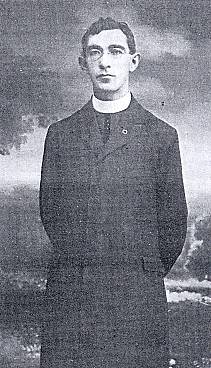
Fr Timothy Leonard (1893 – 1929) [Source]
Fr Cyril Lovett, from Ireland, is one of three brothers who became Columban priests. He worked for many years in the Philippines and then in Brazil and was, until recently, editor of Far East. Fr Brendan teaches at the Institute of Formation and Religious Studies (IFRS), Quezon City. Fr Aidan served in Mindanao, Malate Parish and Manila doctors Hospital. He died in 1999.
On Tuesday 24 July 1929, a telegram brought sad and unexpected news from China. Fr Timothy Leonard had been murdered by bandits in the Province of Kiangsi on 17 July 1929. He became the first of many Columbans to suffer a violent death while serving their people on mission.
Fr Tim Leonard, from Ballysimon County Limerick, Ireland, had studied in St Patrick’s College, Maynooth, the national seminary in Ireland, and was ordained a priest for the Diocese of Limerick in 1918. Immediately after ordination he joined the Columbans and became one of the first group of sixteen to go with Fr, later Bishop, Edward Galvin, co-founder with Fr John Blowick, to China in 1920. They went to work in the Han Yang Vicariate in the Province of Hupeh (Central China). An article from the time of his death reads, ‘From the very first Fr Leonard seemed determined to spend himself in winning souls for his Divine Master. His zeal was tireless. He did not work for Christ: he slaved for him. Many a time his comrades warned that even his iron constitution could not stand the strain he was putting on it. But he never seemed to mind, or to think he needed either rest or attention’.
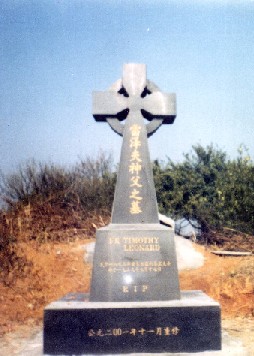
Celtic Cross marking Fr Leonard’s grave in China [Source]
In 1928, the Holy See assigned the Columbans a new district in the Province of Kiangsi. Father Tim was one of a select band of seasoned missionaries who were transferred from the Han Yang Vicariate. Again he threw himself heart and soul into the work. Attacks by small groups of Communists or local bandits were common at the time. It appears that gunfire was heard in the street at about 3am. Father Tim believed that the soldiers inside the walled city were firing on the Communists or bandits outside. Still, he decided to celebrate Mass earlier than usual, at 5.30am. He had just reached the altar when the compound was surrounded and the church broken into by a ragged mob. The bandits seized Father Tim and his altar server and bound them. The young priest pleaded that he needed some necessary articles from the tabernacle. As soon as he opened the door, the bandits snatched the ciborium scattering the Sacred Hosts. Father Tim was led outside the church where a ransom of $30,000 was demanded. He stated that he had little money but offered to hand over what he had if the boy were set free. The boy was set free, and they took Father Tim away with them.
On the evening of 15 July the local Christians lost touch with him. The following morning the bandits, evidently hoping to get a ransom for him, allowed them to visit him at a place in the mountains about 32 kms away. This was the last occasion the Christians saw him alive. He was badly wounded and suffering intensely. His only question was about the Christians in Nan Feng. On being assured that they had not suffered, he said, ‘Thank God, my mind is now easy. As for myself it cannot be more than a matter of a few days’. By 17 July, his fellow Columbans received word that Father Tim was already dead. His body was discovered on 18 July: he was covered with wounds and his head partly severed from his body. He was buried on 20 July in the presence of his colleagues Frs Patrick Dermody, Patrick Quigley, both Columbans, and Fr Chow, a local priest. His grave, now marked with a Celtic cross, has become a shrine where local Christians still visit to pray.
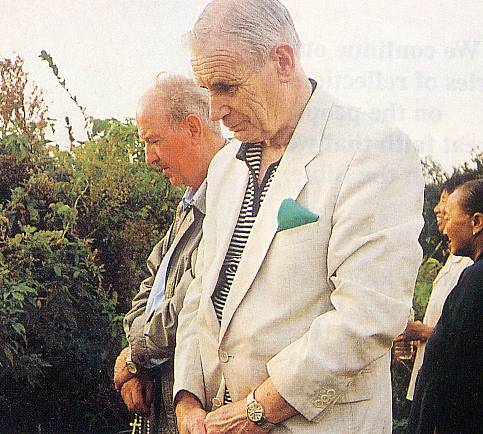
John Leonard, with Columban Fr Joseph Heuston, at Fr Leonard’s grave 2002 [Source]
In the November-December 2013 issue we published an article by Fr Patrick Baker: Memorial Mass for Fr Timothy Leonard. A relative of Father Time, John Leonard from Ireland was present at the Mass in the Columban House of Studies, Cubao, QC.
Thanks to the Diocese of Limerick, Ireland for permission to use the photos above.

Columban Martyrs in Korea
‘A pastor cannot desert his flock’
By Fr Donal O’Keeffe
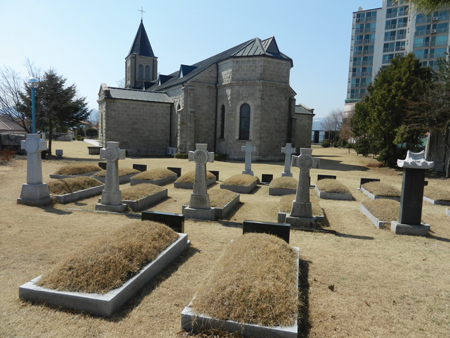
Columban graves, Sacred Heart Cathedral, Chuncheon
Since 1976 Columban Fr Donal O'Keeffe, from Ireland, has worked in Korea with factory workers, urban poor and more recently in mission promotion/education. He has also served as Regional Director in Korea. Here he writes about three of the seven Columban priests who were killed during the Korean War, Fr Anthony Collier, Fr James Maginn, Fr Patrick Reilly, Fr Thomas Cusack, Fr John O’Brien, Fr Francis Canavan and Msgr Patrick Brennan. The cause for their beatification as martyrs of the 2th century, among a list of 84, was initiated by the Church in Korea in 2014.
At the end of World War Two Korea was divided by the great powers at the 38th Parallel. Tensions between the two parts erupted into armed clashes which eventually ended with the invasion of the South by the North on Sunday morning 25 June 1950.
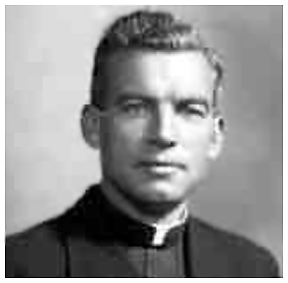
Fr Anthony Collier
Fr Anthony (Tony) Collier was born at Clogherhead, Co Louth in 1913. He entered the Columban seminary in Ireland in 1932, was ordained there in December 1938 and assigned to Korea in 1939. His brother, Father Kieran, worked as a Columban in Burma and his nephew Father Ray, also a Columban, today works in Birmingham, England. He spent the early years of his priesthood in Mindanao.
Father Tony had barely finished language studies in Korea when along with other Columbans he was placed under house arrest when Japan joined the war in 1941. Released in 1945, he was appointed in 1949 as the first parish priest of the new parish of Soyangno, Chuncheon city.
After Sunday Mass on 25 June 1950 the escalation of violence was the main topic of conversation. People talked of fleeing and wanted the priests to come with them. In Chuncheon that afternoon, Fr Tony Collier met Frs Tom Quinlan and Frank Canavan to discuss the situation. An American officer offered to take the priests to safety but they declined. Fr (later Archbishop) Tom Quinlan later wrote that Father Tony refused saying, ‘I want to be with my parishioners’.
Two days later, Father Tony and the parish worker Gabriel Kim were arrested by North Korean soldiers. Accused of being spies, they were tied together and shot. Father Tony was killed instantly and Gabriel was wounded but when falling to the ground Father Tony fell over on Gabriel. The soldiers left them believing both had died. Gabriel eventually escaped and gave an account of Father Tony's death to the Columbans. Fr Collier was the first foreigner to die in the Korean Conflict. He was 37.
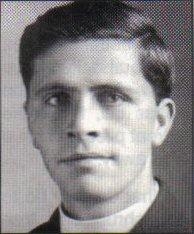
Fr James Maginn
Meanwhile, 135 kms to the east in the coastal city of Samcheok, the second Columban to die, Fr James (Jim) Maginn had celebrated Mass that Sunday. Born in 1911 in Butte, Montana, USA, his family returned to County Down, Northern Ireland. He entered the Columban seminary in Ireland in 1929 and was ordained there in December 1935. He was assigned to Korea in 1936. Like Father Tony, he was placed under house arrest when Japan joined World War Two. Released in 1945, he was appointed pastor to a new parish in Samcheok city in 1949.
The parishioners pleaded with Father Jim to flee but, as many of them testified later, he declined saying, ‘As pastor I am staying here in the church’. He divided up the money in the safe giving it to the people. He was arrested some time later and eventually shot on 4 July 1950. He was 39.
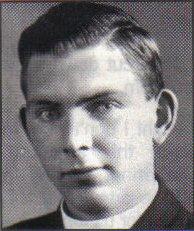
Fr Patrick Reilly
Just 10 kms to the north of Samcheok, in the parish of Mukho, it was a similar story for Fr Patrick (Paddy) Reilly. Born in County Westmeath, Ireland, in 1915, he was ordained in December 1940 and assigned to Korea. However, due to World War Two he was unable to travel until 1947. He had worked in Clifton Diocese, England, from 1941 till 1947. After language studies he was assigned as the first pastor of the new parish of Mukho to the north of Samcheok. After Sunday Mass the people tried to persuade him to leave but as they later attested he told them, ‘A pastor cannot desert the flock’. He did move from the convento to stay in the home of the catechist where he celebrated Mass frequently for the remaining believers. However, he was arrested on 29 August 1950. Later, his body was found on a mountain path - he had been shot through the chest. He was 35.
All three were buried close to where they died. Their bodies were later reinterred behind the Cathedral in Chuncheon. All three made conscious decisions to stay with their people even though they had ample opportunities to flee. For that reason the Korean Church views them as martyrs and is promoting their beatification.
Fr James Maginn’s first cousin Teresa shares her memories of the Columban priest